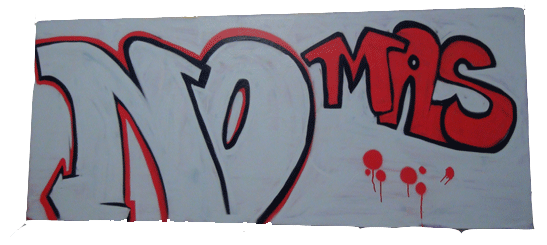LabSurLab Report, Medellín 07-04
Day one in Colombia promised to be a busy day with the event of ‘LabSurLab’ in perspective. LabSurLab is a gathering of different worldwide Labs taking place in Medellín first time this year. From the 6th of April to the 12th of April different projects will present their work and exchange ideas on subjects such as community improvement, hardware recycling and open source applications amongst others. As the round tables, workshops and seminars were taking place in different cultural venues and squares in the city, and the information booklet did not present exact locations and time, I wasn’t sure where to start looking for my contacts of AntenaMutante. Following the LabSurLab guide, our best shot was at the cultural center Morávia, which was located about 45 minutes away from Ellen and my apartment.
Unfortunately Antena Mutante was not attending the round table of that day, but was doing a cartography workshop somewhere in a very sensitive area of Medellín, called Comuna 13. This neighborhood was marked by Operación Orion (2002) under Alvaro Uribe, Colombia’s former president in order to drive out leftist insurgents FARC, ELN and CAP. It held that the area from that point on was under military control in order to restore peace and tranquility. But even though the amount of violence has reduced since than, one sentence I heard that day stayed in my head: “as long as there are weapons, one does not feel safe”. When working with the cartographers, the latter became quite clear as the militias reacted quite aggressively when they noticed they were being filmed. And the fact that they were wearing rifles and guns did not make it any better.
The idea of the workshop was to map out different viewpoints, different ideas in order to offer resistance to the oppression and bring to light themes such as poverty, displacement and economy. It was about showing memories, giving a different view of the problematic and maybe most importantly, present a viewpoint of the people’s perspective instead of that of the mass media.
At 6 o’clock, the 4 different groups that went into the neighborhood to collect footage came together to discuss their findings and come to some common conclusions. What I found especially interesting is the way this meeting was organized; even though there were three leading figures in the group, all opinions and suggestion were carefully taken into account. The final idea of how to continue the work resulted out of a long discussion and referendum where many pros and cons passed the table. The ‘leading figures’ could well be seen as discussion leaders, rather than the ones with final authority. Even when things were said that were not always relevant or useful, it most of the time led other people to come up with an appropriated idea. It was chaotic, slightly unstructured, but effective. This, I think was also characteristic for the whole organization of LabSurLab, where the organization seemed to be fluid, with no rigid planing, but still a clear organization that often went from mouth to mouth rather than a set schedule.
All in all, this was a very instructive first day with already loads of information to process and I can’t wait what more will come!